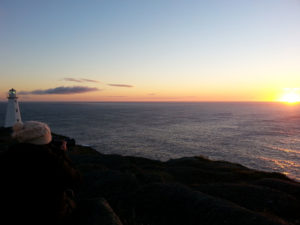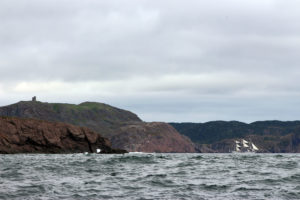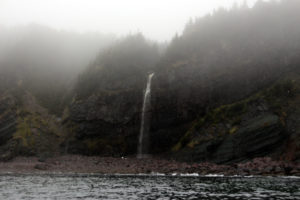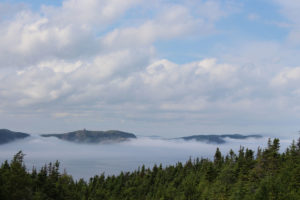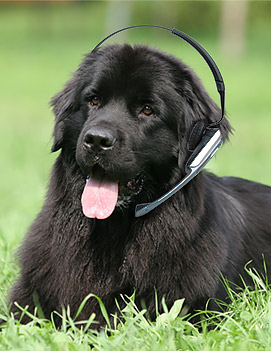One of the especially interesting characteristics guests will discover on a visit to Newfoundland are the many quaint, and sometimes bizarre place names found throughout the province. From ‘Come by Chance’ to ‘Heart’s Content’, ‘Quidi Vidi‘, ‘Brigus’, ‘Cape Freels’ and ‘Bareneed’ – we’ve had a great bit of fun with the labels we’ve provided throughout the years.
Though we’ve exhibited a great deal of creativity in this field, we must also admit that some of our seemingly original choices are really just mangled versions of the foreign names bequeathed by adventurers, explorers and settlers from neighbouring European communities. Names like ‘Spaniards Bay‘ and ‘Portugal Cove‘ are easily understood and pronounced – even by Newfoundlander’s with our thick tongues and atonal annunciations. However, many of the most eloquent handles have been distorted to suit our rapid fire speech; thus towns like ‘Toulinquet’ became ‘Twillingate‘. Or pretty little ‘Petite Harbour’ ends up in a rather ‘Petty’ state of mind.
Then there’s the crazy period of resettlement and the hip names we used to celebrate our new position in modern Canada. In an attempt at urban chique we lost ‘Gayside’ in favour of ‘Baytona’ and ended up with the likes of ‘Centerville’ and ‘Sunnyside’.
Sometimes a name is chosen because of a particularly obvious coastal feature for the Lord knows there must be dozens of ‘Black Heads’, ‘Flat Rocks’ and ‘Red Cliffs’ scattered throughout the island.
And then there are names which seem so self-explanatory that we hardly think about their origins,,,, until you do, only to discover that perhaps we’re even better at the ‘name game’ than we realized. One such example is ‘Freshwater Bay’, located just outside the city of St. John’s enroute to Cape Spear (first named by the Portuguese as Cabo da Esperança btw) and the most eastern point of land in North America.
This is certainly a well-traveled road where both locals and tourists are left to wonder why an obvious intrusion of the North Atlantic’s salt water coast would ever be considered fresh. Over the years I’ve cultivated quite a number of explanations; facing due Northeast the wind and therefore the sea is always “fresh” in this bay, the community down there was called ‘Freshwater’ perhaps because it was located on a nice pool of fresh spring water, or it could be that this was the first place a ship might stop to take on fresh water following a transatlantic voyage. All of which are quite reasonable explanations, but it wasn’t until a recent lobster fishing trip (“recent” in Newfoundland is somewhere in the past 12 months – time stands still out here!) that I finally discovered its “Why”.
We’d just finished checking our pots and the boys were transferring that mornings haul of lobsters from the boat to the holding pound we’ve moored smack dab in the middle of Freshwater Bay. This is at best a two-man job so rather than sit idly, I decided to give the boat a bit of a clean-up, scooping a five gallon bucket of seawater from over her gunnel. As I sloshed the contents across the floor boards I was surprised to see a distinct discoloration in the water I’d collected. I checked to see if the bucket was dirty and seeing that it was perfectly clean I scooped another pail full of what we’d call “brookwater” here in Newfoundland – tainted with a brownish colour from the trees tannin and the iron in our bogs. And then it struck me, with a cupped hand I scooped a handful to my mouth and sure enough,,,,, during a good run off there are so many rivers, waterfalls, ponds, gullies, brooks, and streams – the top layer of the bay “pools up” and it literally becomes a “fresh water bay”.
Now that’s what I call a fresh take on an old story.


